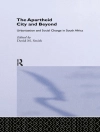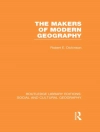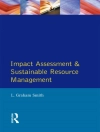Classic Indian texts and Vaastupurusha Mandala are not often discussed in the western discourse on urbanism, even while much of these predate the commonly taught European writings. This book sheds light on some of those forgotten concepts, thus making the lesser discussed classic Indian town organization ideas accessible to architecture, landscape, and urban planning students worldwide. The resonance of these concepts in present times are reviewed through case studies of select Hindu temple towns in India. Furthermore, the author underscores the formal abstraction of the classic Indian Mandala and transplants the discourse from sociology to socio-ecologically adept trans-disciplinary design thinking. The creative interpretations offer a premise to start revising classic models for current practice to influence the urbanism and ecology of a place in accordance with the changing climate.
Inhoudsopgave
Chapter1. Introduction and Methodology.- Chapter2. Ancient Indian Design and Town Planning Principles as a Frame for Case Studies.- Chapter3. Other Interpretive Frameworks.- Chapter4. Shiva Temples.- Chapter5. Deliberations.
Over de auteur
Archana Sharma seeks ways for cities to coexist in mutualistic symbiosis with nature from the intersectional vortices of design, planning, science, and policy. Dr. Sharma is an Associate Professor at Morgan State University. Past affiliations with the University of Tennessee, Knoxville, Maharaja Sayajirao University, National University of Singapore, RMIT University in Australia, and Harvard Kennedy School of Government continue to shape her ongoing transdisciplinary works. She has offered advisory services to local and international stakeholders ranging from the City of Baltimore to the United Nations, underscored by the ethos of an equitable and just environment for all. This is the second book on design thinking for Dr. Sharma.












